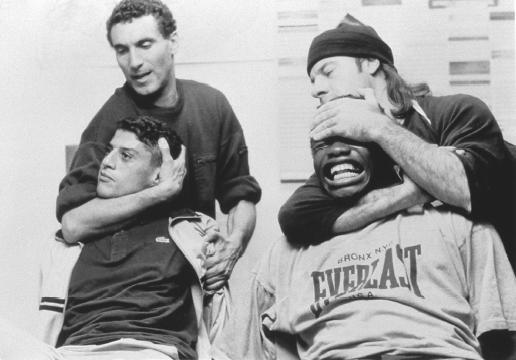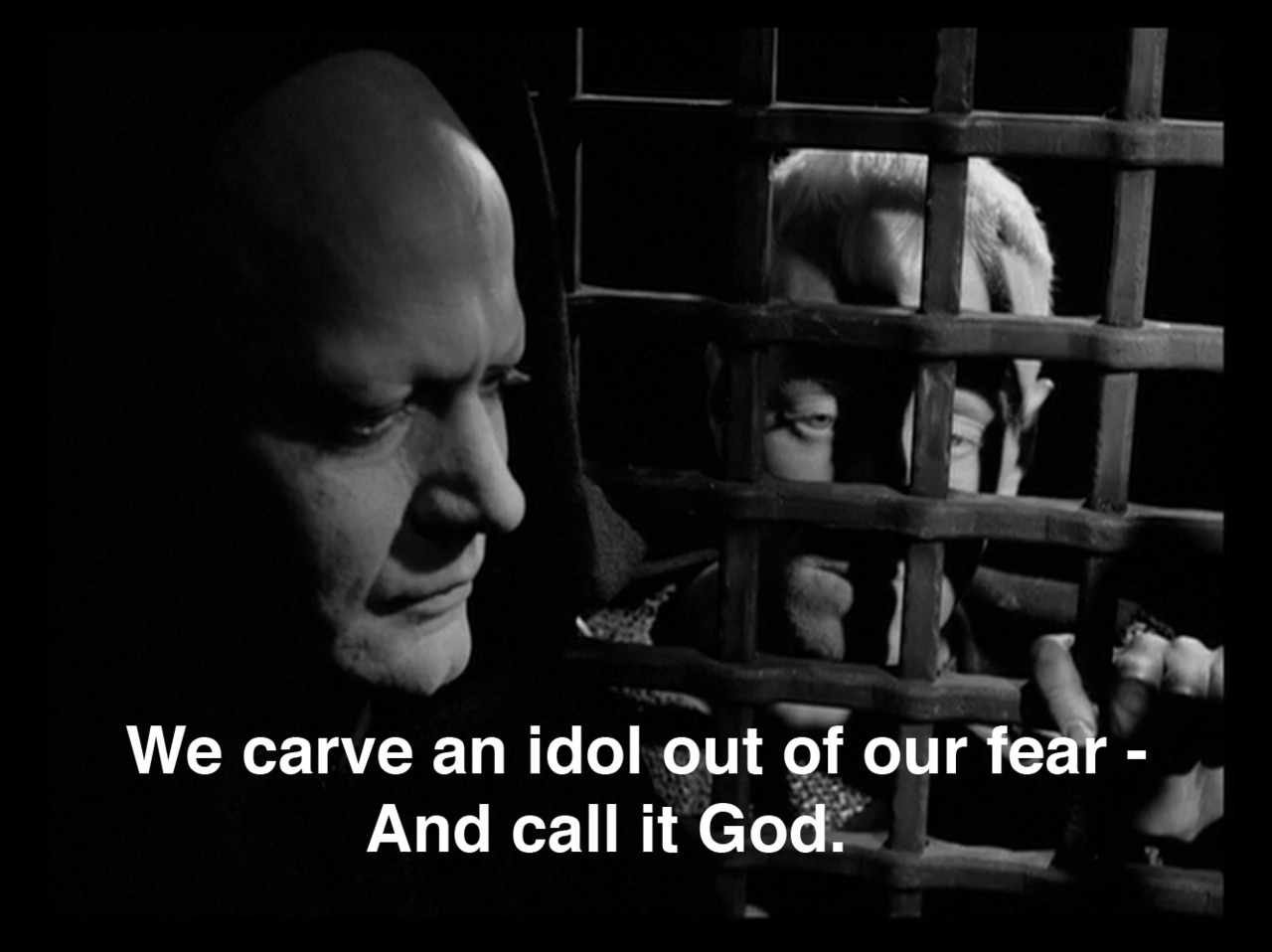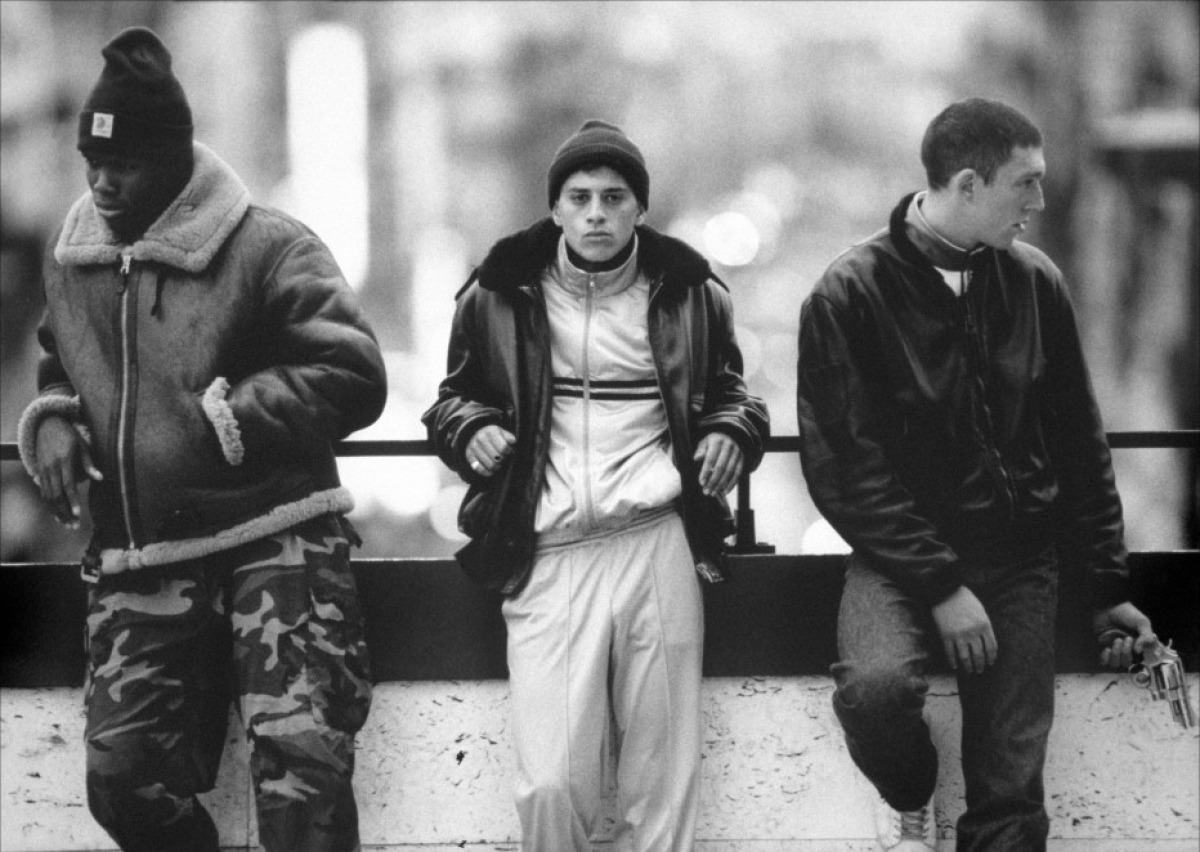"Given that the Banlieue is also the principal
location of France's marginalised ethnic minorities, cinematic representations
of the Banlieue cannot easily ignore the representation of ethnic differences.” (Tarr, 2012) . This is true of La Haine as it was filmed on location it
gives a questionably true representation of life in the Banlieue. As La Haine takes place in the days
following a riot from the beginning the audience can see how the citizens,
especially the youth, of the Banlieue are unfairly targeted by the police due
to their ethnicity. It has been reported that people have died from police slip
ups whilst being held in custody and police brutality, this is also shown in La Haine “in one famous scene, two policemen sadistically molest Hubert
and Saïd while a trainee officer watches.” (Vincendeau, 2012) . This is further shown in the ending of the movie when Saïd
and Vinz are stopped by the police for no reason resulting in Vinz being shot
accidently by the police officer. Such police brutality and harassment shows
how the French slogan of liberty, equality and fraternity does not apply to the
second generation immigrants.
Throughout La Haine there is
also the theme that the young people growing up in the Banlieue do not feel
that they fit into one culture, they are torn between being French and whatever
their parents culture may be. The boys also seem to have turned away from
choosing either identity and have looked to American culture instead. When we
enter Vinz’s house we see Jewish iconography throughout the house however, as
soon as we enter his room it is filled with American iconography. “Vinz does a De Niro imitation (“Who you talkin' to?”). There's
break-dancing in the movie. Perhaps they like U.S. culture because it is not
French, and they do not feel very French, either.” (Ebert, 1996) . This point that
Ebert makes can be evidenced further through the dj set in which two different
generations songs are mixed together to perhaps signify the torn identities. The
way in which their identities are torn signifies that they do not feel part of
the fraternity that France expresses every French citizen is a part of.
In
conclusion it is apparent that the way in which La Haine portrays life in France shows that liberty, equality and
fraternity is not the case for everyone. As for mentioned the film shows how
racial inequality is very apparent not only in the banlieues but also in the
cities as well. The alienation of the boys in Paris is signified through the dolly
back zoom and the whole film being in black and white shows the bleakness of
there lives.
Student
Blog:
The
student blog https://up747885.wordpress.com/page/2/
in my opinion is excellent. Its layout is very engaging and easy to follow with
many pictures and video clips to break up the text. It shows lots of evidence
of research and subject knowledge of the films especially in the post ‘Is
Humanising Hitler Problomatic?’
Bibliography
Ebert, R. (1996,
April 19). Hate (La Haine). Retrieved April 2015, from RogerEbert:
http://www.rogerebert.com/reviews/hate-la-haine-1996
Kassovitz, M.
(Director). (1995). La Haine [Motion Picture]. France.
Tarr, C. (2012). Reframing
Difference: Beur and Banlieue Filmmaking in France. Manchester:
Manchester University Press.
Vincendeau, G.
(2012, May 8th). La haine and after:Arts, Politics, and the Banlieue.
Retrieved from Current : http://www.criterion.com/current/posts/642-la-haine-and-after-arts-politics-and-the-banlieue



















